
CPGs forge emotional connections with consumers through products that contain minimal ingredients and streamlined packaging.
By Nancy Brown, Contributor
Back in the 1960s, the acronym “KISS”—”Keep it simple, stupid”—began showing up on bumper stickers, billboards, and t-shirts across the country. A design principle first used by the U.S. Navy, “Keep it simple, stupid” is defined by the belief that most systems work best if they are kept simple rather than made complex.
Throughout history, this sentiment has been championed by many esteemed artists and thinkers, among them Leonardo da Vinci (“Simplicity is the ultimate sophistication”) and Mies Van Der Rohe (“Less is more”). And in the decades since it became a cultural touchstone, everyone from software designers to animators has hopped on the KISS bandwagon.
Today, simple is still better, and now consumers have caught the KISS fever as well. After all, everyone today wants their lives to be simple—especially busy moms and dads who want to give their families simple, healthy, wholesome meals without all the fuss. Simple is now mainstream, not alternative, and it has become synonymous with imperfect and raw, not perfect and quiet. So it’s no surprise that consumer packaged goods companies have taken notice of this fact and are forging emotional connections with consumers through products that contain minimal ingredients and streamlined packaging.
Most significantly, “simple” brands are showcasing their simplicity on pack, putting their single most important idea front-and-center through photography and copy. Brands such as Simply juice, Simplait yogurt, Simple Skincare, Wellness Simple dog food, and Lay’s Simply Natural Potato Chips wear their simple pride on their chests with packaging that is minimal, elegant, and free of all the fuss.
Here are five “ingredients” that brands can use to communicate the simple ethos on-pack:
1. Put your simplicity front-and-center.
“Simple” and “simply” are being used both in product names and in their subheads. Pillsbury Simply touts its simple status right there in the title, while Dorset Cereals modifies its brand name by calling itself “simply delicious muesli.” Simple is becoming mainstream consumer language now, and can be found on more products than you may realize.
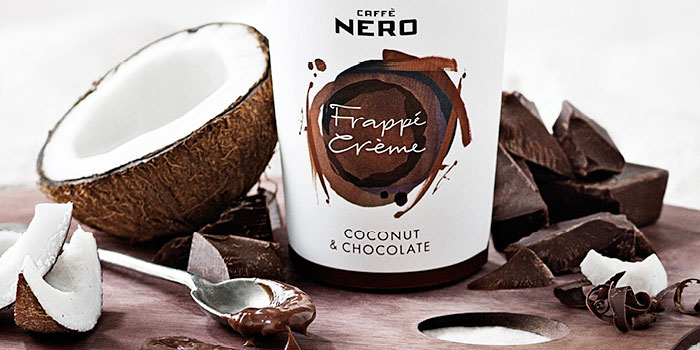
2. List your ingredients.
Simple products usually contain just a handful of ingredients, which they put front-and-center on their packaging. For example, Simplait from Yoplait has “just 6 simple ingredients,” as indicated in copy sandwiched between the brand name and a large product illustration. Lay’s Simply Natural Potato Chips lists just three ingredients—potatoes, expeller-pressed sunflower oil, and sea salt—on its bag…although that still doesn’t exactly make them good for you!
3. Show your product.
To cue appetite appeal, simple brands are literally and figuratively showing their products on their packaging. Simply Juice from Simply Orange Juice Co. uses fruit photography on its labels to convey that there’s not much more inside their bottles than the purest form of the product. Dorset Farms cereal boxes feature peek-a-boo windows that let you see the all-natural granola inside…and not much else.
4. Go heavy on the white space.
Nothing conveys simple like a whole lot of white space. Many brands try to pack a lot of claims and visuals on their products, but simple brands make it clear that they are really just about offering the good stuff—no misleading claims or unnecessary graphics to bog them down. Ceres All-Natural Juices takes this approach, and as a result, really makes the product the star.
5. Stress your single most-important message.
Simple products focus their brands on one concise message and then drive that message home. Simple Skincare products from Unilever put the copy, “No perfume, no colour” on its packaging, telling you what’s not inside, as opposed to what is. Wellness Simple Dog Food puts its “SIMPLE” moniker in large, capital letters, and also adds “Limited Ingredient Diet” directly underneath, to make it known that Fido is getting only the very best, curated ingredients in his food.
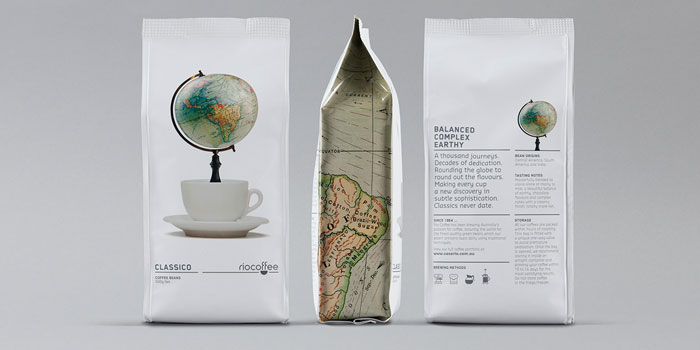
And while we agree that simple is often better, we do think that using as many of these suggestions together (which isn’t exactly minimal) will help you leverage your brand in this trendy new category. So go ahead and give your brand a KISS—nobody will dare call you “stupid” for doing so in today’s market.
Nancy Brown is managing partner of brand agency CBX.
[ add comment ] ( 160 views ) | permalink |




 ( 3 / 2621 )
( 3 / 2621 )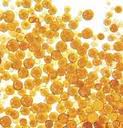
There is a lot of chatter about bioresins, biodegradables, and oxodegradables but what are the myths, the truths, and do they all have a place in the total plastics sustainability strategy?
Renewables or bioresins, in the plastics sense, are plastics made from organic sources vs. fossil fuels (although fossil fuels are renewable, in a long-term sense).
Truth: Everyone is concerned about the environmental challenges related to using plastics. Myth: Plastics made from renewable resources will solve all the problems associated with taking environmental responsibility for using plastics.
Truth: Not all bioresins are created equally; renewable plastics that are produced from plant products are chemically identical to fossil-fuel-derived plastics. The only difference is the feedstock for the ethylene that is produced. Not all bioresins are equal to a petroleum-based resin. Not all biobased resin has an established market for recycling. Not all biobased resins are degradable or compostable.
Myth: Shouldn’t a non-fossil-fuel-derived plastic be enough to satisfy the needs to be green and reduce environmental impact? Not really. When thinking about the benefits and consequences of use, there is really no difference. The plastic is the same. Whether or not plastics are produced from fossil fuel or plant fuel, they won’t solve the municipal solid waste problem.
Broad claims of carbon footprint reduction by using plant-based plastics are true. Plants take in CO2 and give off oxygen. The “sequestering” of CO2 is what enables plant-based resins to claim to have a positive carbon footprint. This narrow view of environmental friendliness does not take into account land use consequences, water consumption, environmental impact of fertilizer use, nor the amount of energy used to produce and transport the plastic resin.
Now for the consequences. Oxydegradables will break down on exposure to oxygen over the long term. They are useful for short-term applications, but can cause serious problems in the recycling industry if they get integrated into the plastics that are going back into the resin production cycle.
Biodegradables break down organically, not necessarily from exposure to air, but that does help promote the degradation. Again, this resin is useful for short-term applications similar to oxydegradables. Both of these cannot be mixed with non-degradable resins and still retain the base resin’s properties when processed as post-consumer resins (PCR). Without clear labeling, this creates significant challenges for waste stream processors for sorting and for plastics reclaimers in keeping these resins out of the recycling stream.
Not to be down on plastics made from renewable resources as they are a positive development and one that should be part of the overall plan to reduce the impact on the environment. The main concern is that focus will be taken away from the real issues at hand, if people are led to believe that renewables will solve plastics’ negative environmental image.
By: Tamsin Ettefagh, vice president, Envision Plastics
Published in May 15, 2013
www.packstrat.com
[ add comment ] ( 61 views ) | permalink |




 ( 3 / 2681 )
( 3 / 2681 )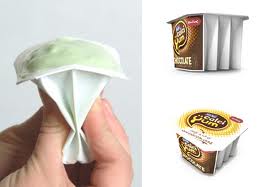

CrushPak® is a unique packaging technology that offers consumers a new way to consume food products, with or without a utensil.
CrushPak is a convenient, on-the-go pack that gives consumers a choice in how they eat their favourite foods and manufacturers new ways to position products and create new consumption opportunities.
APPLICATIONS
Yogurt, cream cheese, ice cream, jelly, fruit pulp, pudding, or paste - any viscous product can be delivered to your customers in a convenient, easy to use pack that builds brands and adds value.
PROVEN SUCCESS
CrushPak is not an untested new product – it has already experienced phenomenal success. Adults enjoy the convenience and kids enjoy the fun.
CrushPak has shipped over 500 million units since 2009 and is currently licenced to Danone in USA, Canada, Mexico, Brazil and Argentina. CrushPak has also been licensed to Parmalat in South Africa and Bright Dairy the 3rd largest dairy company in China.
MANUFACTURED ON YOUR EXISTING LINES
Implementation is rapid and involves little CAPEX as the pack runs on existing machinery and uses standard materials. CrushPak reduces the plastic content of a standard cup by 35%, creating a host of cost savings and environmental benefits. It can be manufactured in sizes ranging from 15g to 350grams.
SUSTAINABLE COMPETITIVE ADVANTAGE
CrushPak is protected by strong intellectual property rights providing our exclusive licensees with a unique opportunity to seize sustainable cost and market advantages over their competitors.
For more information visit: http://www.crushpak.com
[ add comment ] ( 49 views ) | permalink |




 ( 3 / 2488 )
( 3 / 2488 )Whole Foods Market has announced that by 2018, all products in its US and Canada stores need to be labelled if they contain genetically modified organisms (GMOs).
Whole Foods Market co-CEO Walter Robb said the company is increasing its support of certified organic agriculture, and is working with its supplier partners to grow its non-GMO supply chain.
"The prevalence of GMOs in the US paired with nonexistent mandatory labeling makes it very difficult for retailers to source non-GMO options and for consumers to choose non-GMO products," Robb said.
Whole Foods Market, which sells 3,300 Non-GMO Project-verified products at present from 250 brands, is set to expand the effort by joining forces with suppliers in all categories as they shift to ingredients from non-GMO sources, or label products containing GMOs clearly.
"We're responding to our customers, who have consistently asked us for GMO labeling and we are doing so by focusing on where we have control: in our own stores," Robb added.
Whole Foods, which is encouraged by many labelling initiatives that are compulsory, proposes to move forward with its new GMO transparency plan.
The initiative will enable the company to provide better transparency about the products it sells to its customers.
The supermarket chain has been associating with many of its supplier partners for several years to source products without GMO ingredients.
Whole Foods, which began putting its 365 Everyday Value line through Non-GMO Project verification in 2009, encouraged its grocery supplier partners to follow suit.
The retailer has seven stores in the UK, which already require labelling for all foods or feeds that intentionally contain or are produced from GMO ingredients.
From: http://www.packaging-gateway.com
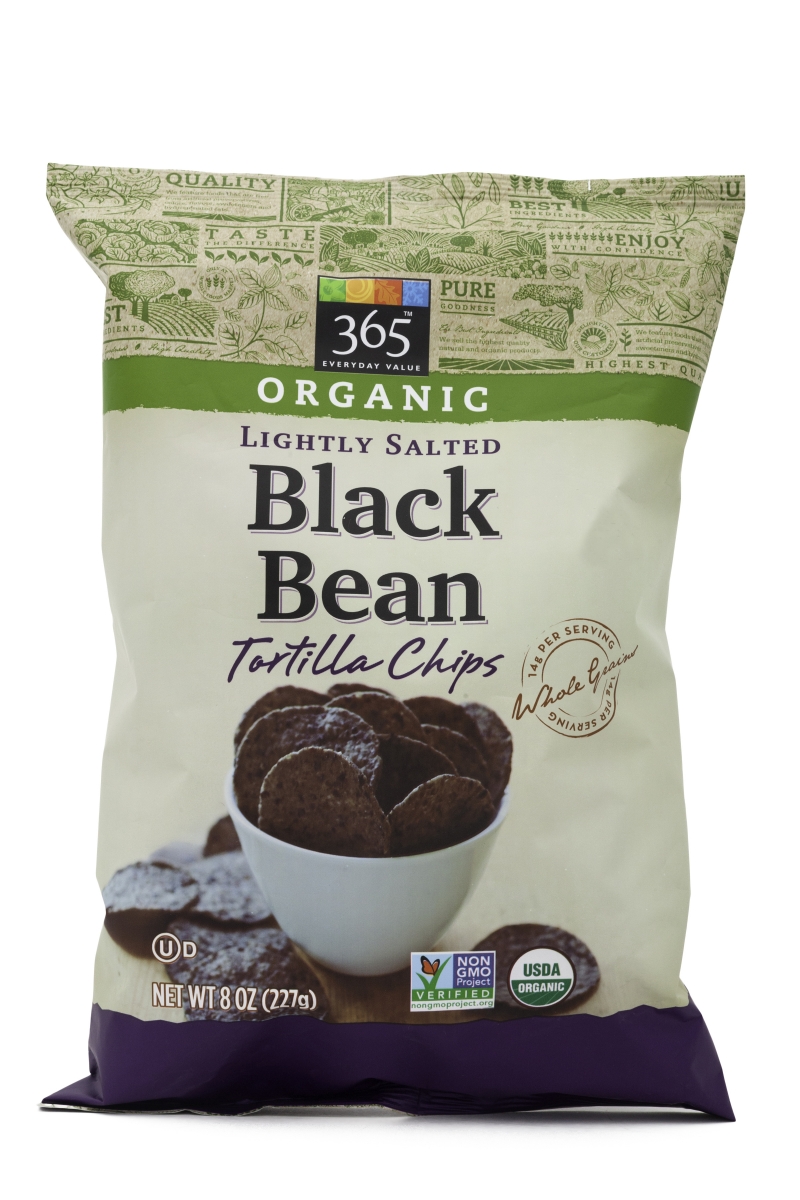
[ add comment ] ( 48 views ) | permalink |




 ( 3 / 2436 )
( 3 / 2436 )The proliferation of recycling-related labels on today’s packaging creates confusion in the marketplace.
Recovery-related messaging and its associated iconography on packaging, such as "please recycle" and "100% recyclable," give the erroneous impression that a package can be recycled everywhere.
The Packaging Recovery Label System was initiated by GreenBlue's Sustainable Packaging Coalition to address these issues, and to:
* Reduce confusion by creating a clear, well-understood, and harmonized label that enables industry to convey to consumers how to recycle a package after its use.
* Improve the reliability, completeness, and transparency of recyclability claims through a nationally relevant data set on access to recycling for all packaging materials and forms.
* Provide incentive for industry to participate in a pre-competitive labeling initiative that follows FTC Green Guides.
We have soft launched the Label System! This includes:
* On-package labeling.
* Consumer and other stakeholder education via the How2recycle.info website, to include a consumer survey.
* Education and feedback via select municipalities, recyclers, and brand owners.
* Evaluation of the business model.
See a new Label Designs proposal (NOT for download or use without permission):
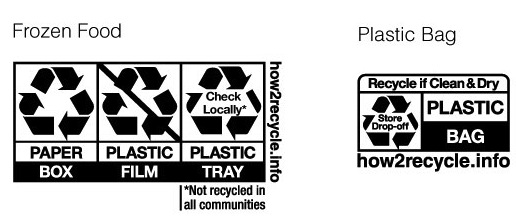
The Key Components of the Project are:
* A label design for on-package recyclability labeling by component.
* A "Store Drop-off" label for plastic bags and films collected at retail.
* A data collection effort to consolidate “reach”—community access to recycling--data and related information.
* A how2recycle.info reference website with tools on how to Check Locally.
The Labeling Project Has Included the Following Work:
* Research into the regulatory framework regarding on-package labeling for recovery and recycling.
* Inventory of global recovery examples and material-related labeling.
* Inventory of data related to reach—the percentage of the population having access to recycling certain materials and package formats.
* Stakeholder engagement (e.g. consumers, other NGOs, Federal, state and local government, recyclers, material trade organizations).
* Consumer feedback qualitative and quantitative testing on label designs, to include iconography and language.
For further information visit http://www.how2recycle.info/
[ add comment ] ( 55 views ) | permalink |




 ( 3 / 2713 )
( 3 / 2713 )

 Calendar
Calendar